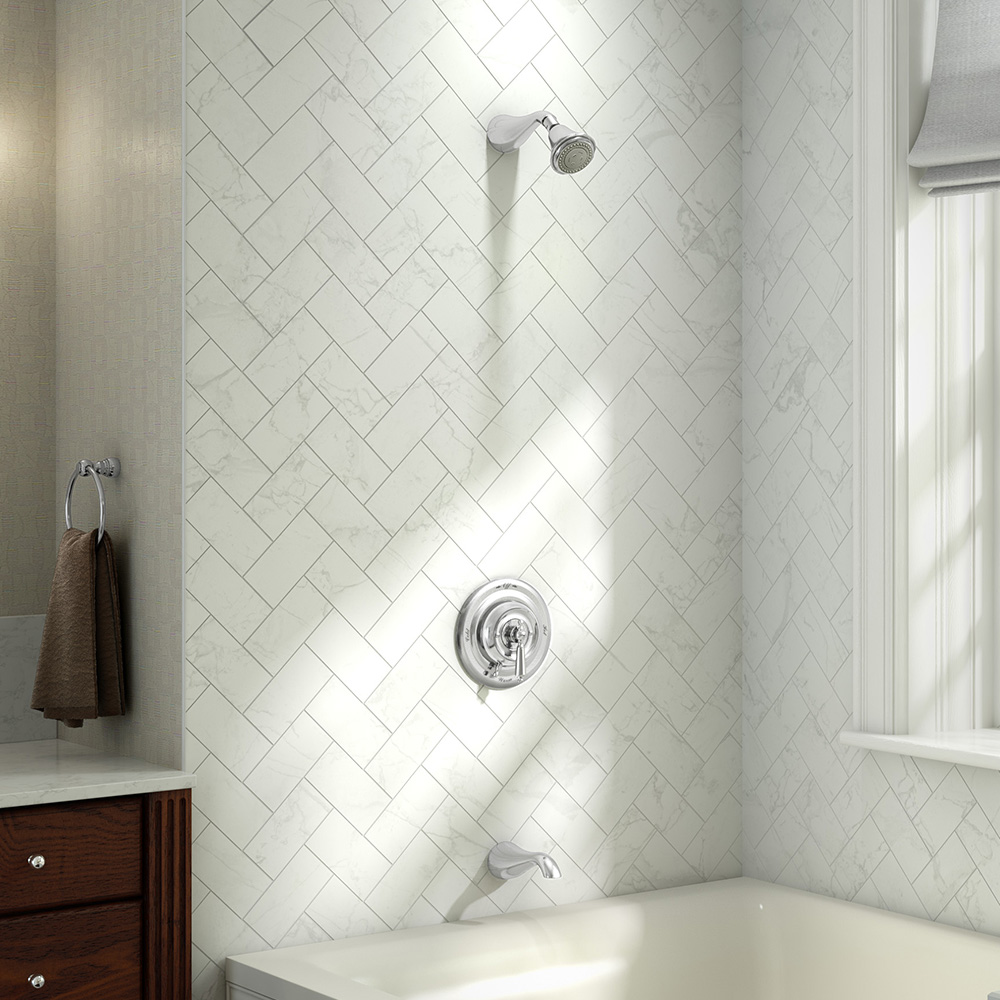5 Solutions to Acrylic Bathroom Problems
5 Solutions to Acrylic Bathroom Problems
Blog Article
{View Just how do you feel on the subject of Hiring a Plumbing Expert? We recommend that you clean your acrylic bathing product made of Delta ProCrylic or Acrylic with Innovex Technology with non-abrasive soaps and cleaners, such as: When it’s time to clean, always use a terry cloth towel, soft cloth or sponge to avoid scratching the acrylic surface. Don’t use abrasive scrubbing pads, steel wool or sponges, cause permanent damage to the acrylic material. If you use a drain cleaner or clog remover, be sure to rinse thoroughly with water so no product is left standing near the drain. Some chemicals and cleaners may deteriorate acrylic surfaces, causing cracks and, potentially, property damage. To avoid this, don’t use cleaning products that state on their label that they are not suitable for use on Acrylic, ABS, Polystyrene or Plastic. Be sure to check the label of any product before you apply it to the surface; it’s easier to avoid damage than to try to remedy it. Chemicals we do not recommend using to clean acrylic showers/tubs: When you’re ready to apply sealant, a little planning goes a long way. Pick up some painter’s tape and use it to mask off the seam to help make cleaning up easier. When you’re applying the bead, use a constant, steady speed to avoid an uneven finish. Use a caulk tool or a plastic spoon to work the sealant into the joint. Wetting the tool with denatured alcohol will help create a smooth finish. Follow the directions on the back of the tube for cure time. Certain chemicals and cleaners may deteriorate acrylic surfaces, causing cracks and, potentially, property damage. After you’re finished applying it, clean up the product surface and remove any excess sealant with denatured alcohol. Don’t use solvents (turpentine, lacquer thinner, mineral spirits, paint thinner, MEK, xylene, acetone, naphtha, etc.) that can wreak havoc on an acrylic surface. With a little care and consideration, you can prevent damage to your acrylic shower or tub. Keep a supply of soft cloths handy and remove any damaging products or abrasive scrubbing items from the bathroom to ensure they aren’t around when it’s time to clean. https://www.deltafaucet.com/design-innovation/inspiredliving/how-to-clean-acrylic-shower Hopefully you enjoyed reading our section on Things To Look Out for Before Hiring a Plumbing Company. Thanks a ton for finding the time to browse our post. Sharing is good. Helping others is fun. Thanks a lot for your time. Kindly check up our website back soon.
Acrylic bathrooms, shower trays, and also other acrylic restroom ware have actually come to be much more common in shower rooms in current times. Not as resilient as well as stylish as enamel and porcelain bathrooms and components, they are much more budget friendly and offer pretty much the very same basic purpose. Some common instances of damage to acrylic shower room components consist of discoloration, fractures, openings, and so on.Bath Staining
With extended use of acrylic baths comes discoloration or discoloration. While some stains can be eliminated conveniently, utilizing special chemicals, others call for that the bathroom be resprayed. It is necessary to note that bleach or detergents do extremely little in removing such discoloration and they might also worsen it. A lot of times, these cleaning agents induce discoloration gradually. Aromatherapy oils loosen up the dust in some cases thus bring back the bathroom to its previous magnificence. Cleaning up and also brightening likewise sometimes. For even more stubborn stains, you will certainly need a new layer of finish. This type of taking care of will certainly call for an expert.Chain reaction
Occasionally, people try to repaint the whole surface area of their acrylic bath by themselves either due to the fact that they do not such as the color to hide imperfections. You should never make use of paint remover on acrylic bathrooms. Paint removers do not respond with the surface of metal baths, they damage acrylic bathrooms irreversibly.Scraped shower or bath surface area
Polymer bathroom components are not abrasion-resistant like enamel selections. Being a really soft product, acrylic scratches can even be concealed without coating or filling. For these, you must seek expert assistance for your bathroom fixings.Cracked Acrylic Baths
The life expectancy of acrylic as well as fiberglass baths is up to 15-20 years for shower frying pans and also baths, usually. Cracks in an acrylic shower tray are probably amongst the simplest issues to repair for a fixing specialist. This is the very same for PVC, resin, and also other such materials.
Polymer bathrooms, shower trays, and also other acrylic shower room ware have become extra typical in restrooms in recent times. With prolonged usage of acrylic bathrooms comes discoloration or staining. You should never use paint eliminator on acrylic baths. Paint eliminators do not respond with the surface area of steel baths, they ruin acrylic baths irreversibly. The lifespan of acrylic as well as fiberglass baths is up to 15-20 years for shower pans as well as bathrooms, generally.How to clean Acrylic shower
USE THESE NON-ABRASIVE CLEANERS
DO NOT USE THESE CLEANERS
Sealant Application Tips

Call